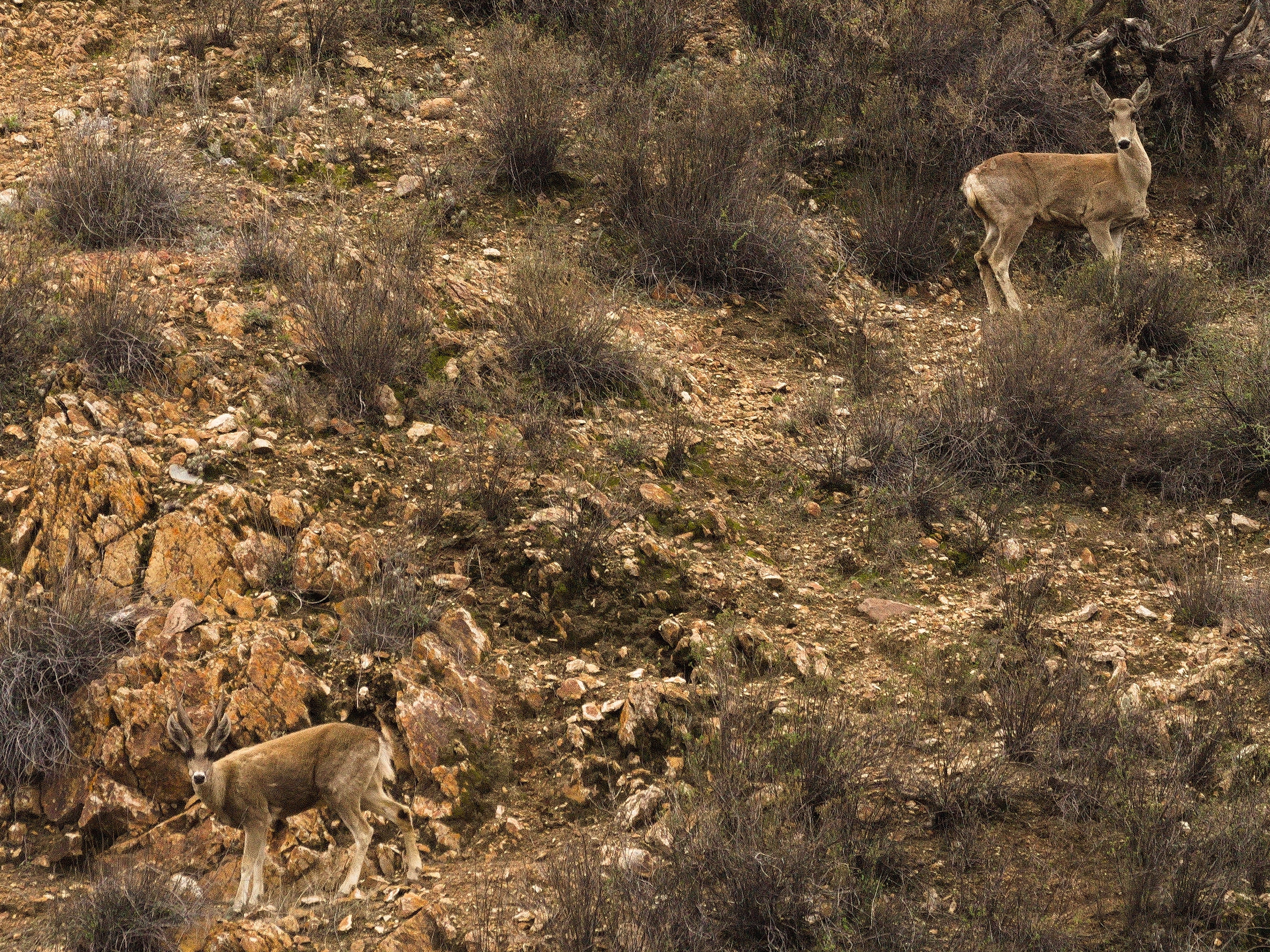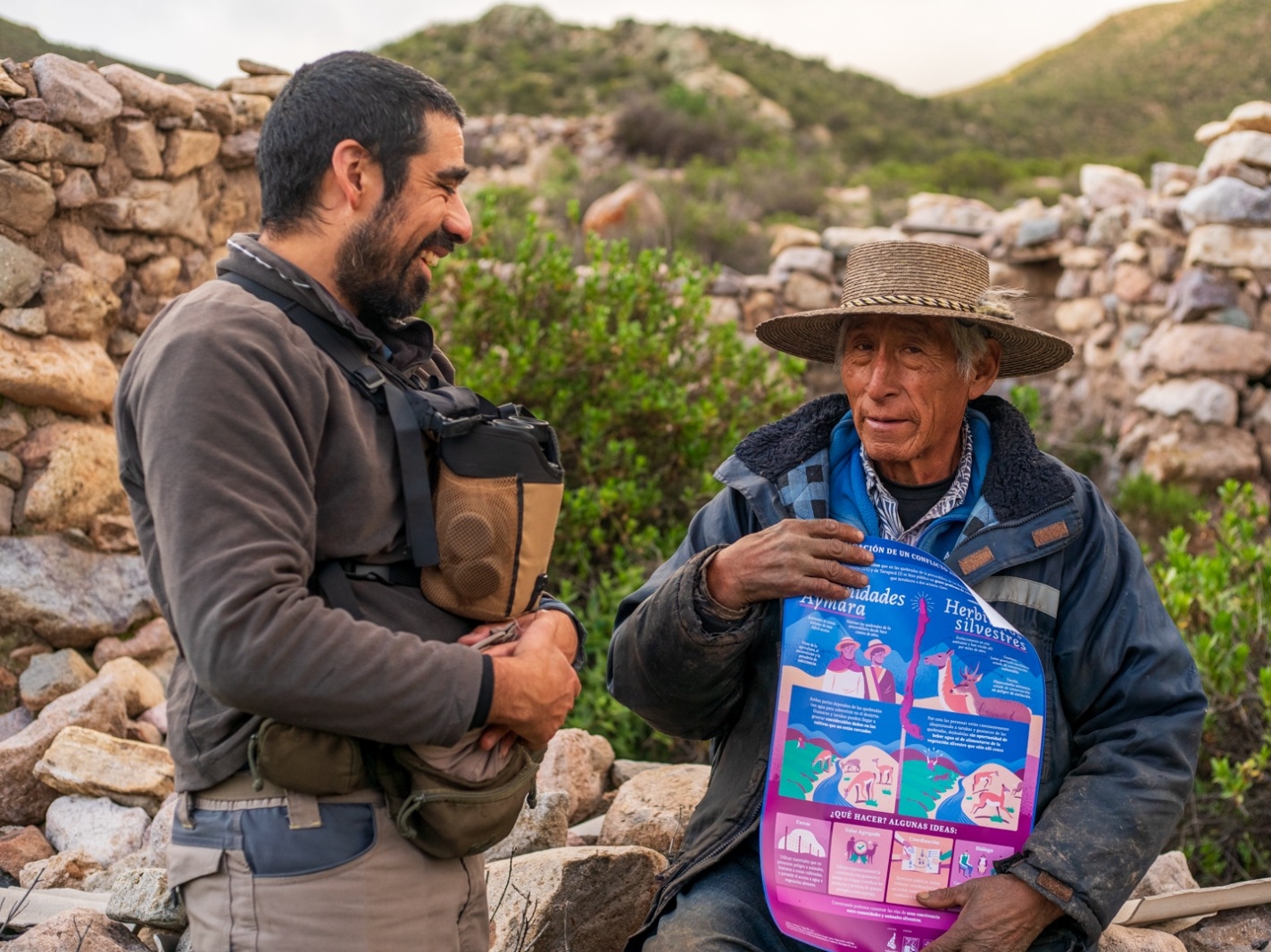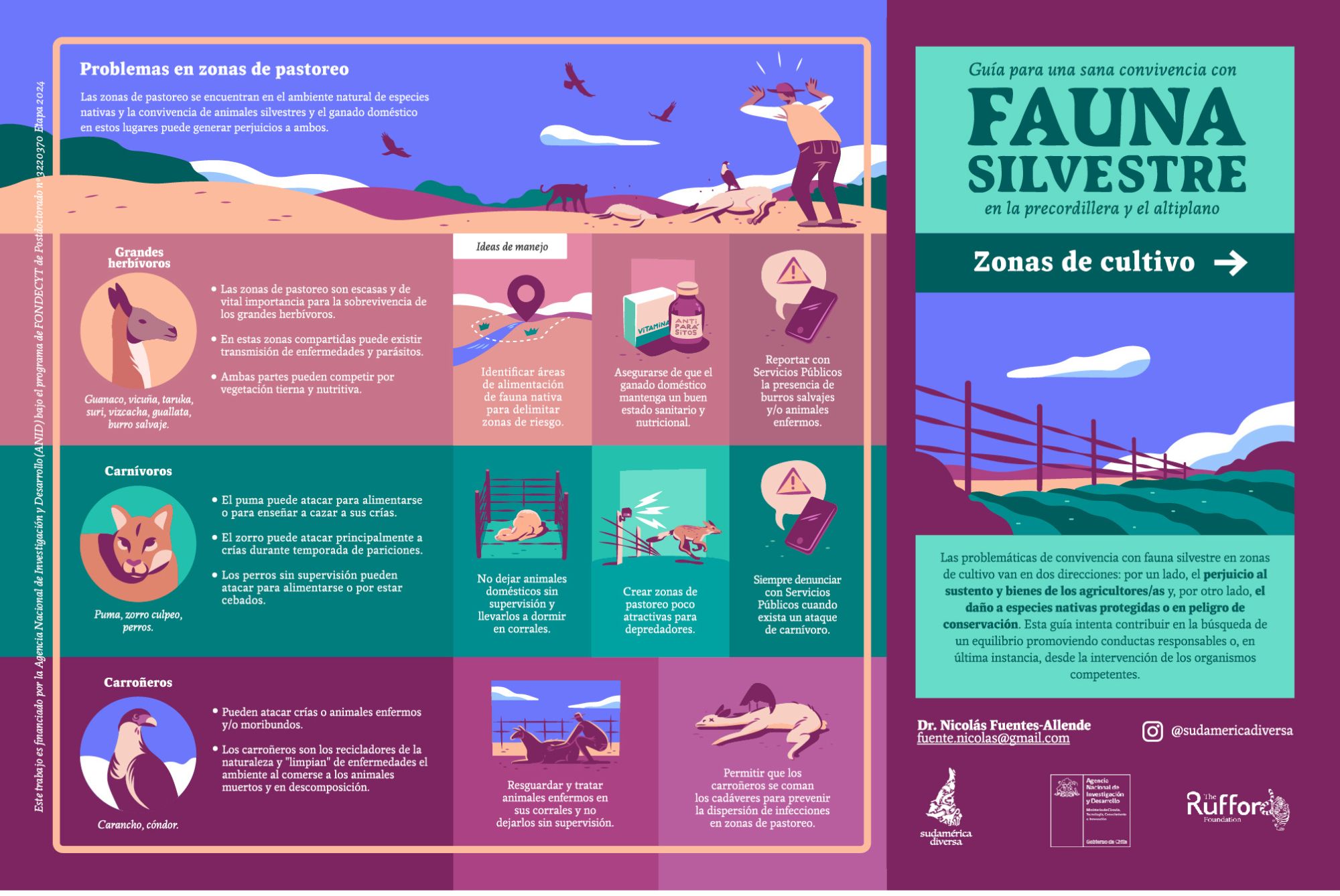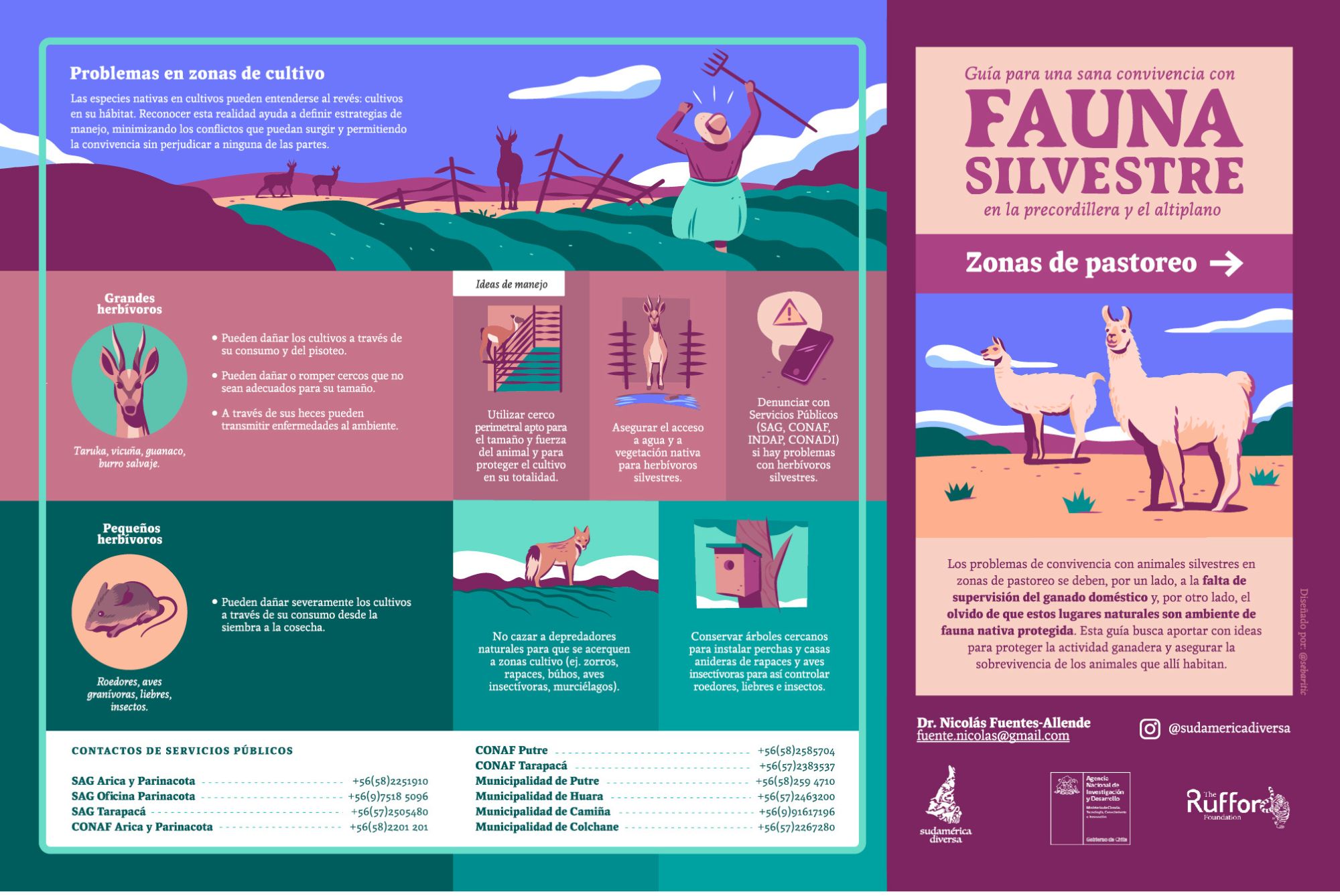
Tarucas in Central Chapiquina. © Nicolas Fuentes-Allende/Fundacion Sudamerica Diversa.
Only 12% of core taruca habitat is formally protected, according to new research by an international collective of scientists assessing the species’ distribution in South America.
The collaborative study, featured in the May 2025 issue of the journal Oryx, recommends safeguarding the connectivity of the species’ core distribution by establishing new transboundary protected areas.
The taruca (Hippocamelus antisensis) – a Vulnerable and understudied deer species – is native to South America, found in high-altitude ravines and gullies in the Central Andes Ecoregion. Scientists found the largest part of its range in Peru (54%), followed by Bolivia (30%), Argentina (10%) and Chile (6%).
However, the transboundary existence of this threatened species poses a challenge: effective conservation management requires international coordination to harmonise country-specific actions with regional needs. Such coordinated efforts remain rare, and the study is the first instance in which researchers, conservation managers and governmental authorities from different South American countries have connected to model taruca distribution.
 Farmer from Lupica, Arica y Parinacota. © Facundo Mercado/Fundacion Sudamerica Diversa.
Farmer from Lupica, Arica y Parinacota. © Facundo Mercado/Fundacion Sudamerica Diversa.
In addition to strengthening and formalising international collaboration among taruca experts and raising the species’ appeal among policymakers and the public, the study suggests improving taruca coexistence with local communities.
Spanish-language publications including Europa Press and La Cuarta reported the research findings, with the latter highlighting concerns that local taruca extinctions could be occurring.
The study was led by Chilean scientist Nicolás Fuentes-Allende and involved researchers from universities across Argentina, Bolivia, Chile, Peru and Spain.
Since 2022, Nicolás has received two Rufford Small Grants for his work to conserve tarucas and establish healthy human–taruca coexistence. Both projects investigated the effects of seasonal humidity on wild and domestic ungulates, herbivores and livestock in rural areas of the Atacama Desert. In 2024, he began experimenting with the use of electric fences to deter tarucas from causing crop damage, with promising results. This shift in method from using foxlights is the focus of the video ‘Can an Electric Fence Help with Conservation?’, on YouTube.
 Field crew at a site with petroglyphs depicting the historical relationship between Indigenous communities and large herbivores. © Facundo Mercado-Sandoval.
Field crew at a site with petroglyphs depicting the historical relationship between Indigenous communities and large herbivores. © Facundo Mercado-Sandoval.
“I am very happy about these findings because I truly believe that healthy coexistence between taruca and local communities is possible,” Nicolás says, speaking to The Rufford Foundation. “Many farmers say they love taruca. They just want to prevent crop damage.”
“Our work is very important because we are the only people working on taruca conservation in Chile. In the Southern Hemisphere, some threatened species live in unprotected zones due to limited funding and community resistance to the restrictions that come with living in a protected area.”
He adds, “Tarucas in Chile urgently need more supporters and donors. I just hope that these efforts convince Chilean authorities to be more involved in the conservation of this charismatic and special species.”
Congratulations to Nicolás and his team for their transformative conservation work in South America. Read their full report: ‘Using local scientific knowledge for transboundary conservation: distribution modelling for the taruka in South America’.
 Project infographic 1/2. © Sebastian Barria (@sebaritic).
Project infographic 1/2. © Sebastian Barria (@sebaritic).
 Project infographic 2/2. © Sebastian Barria (@sebaritic).
Project infographic 2/2. © Sebastian Barria (@sebaritic).